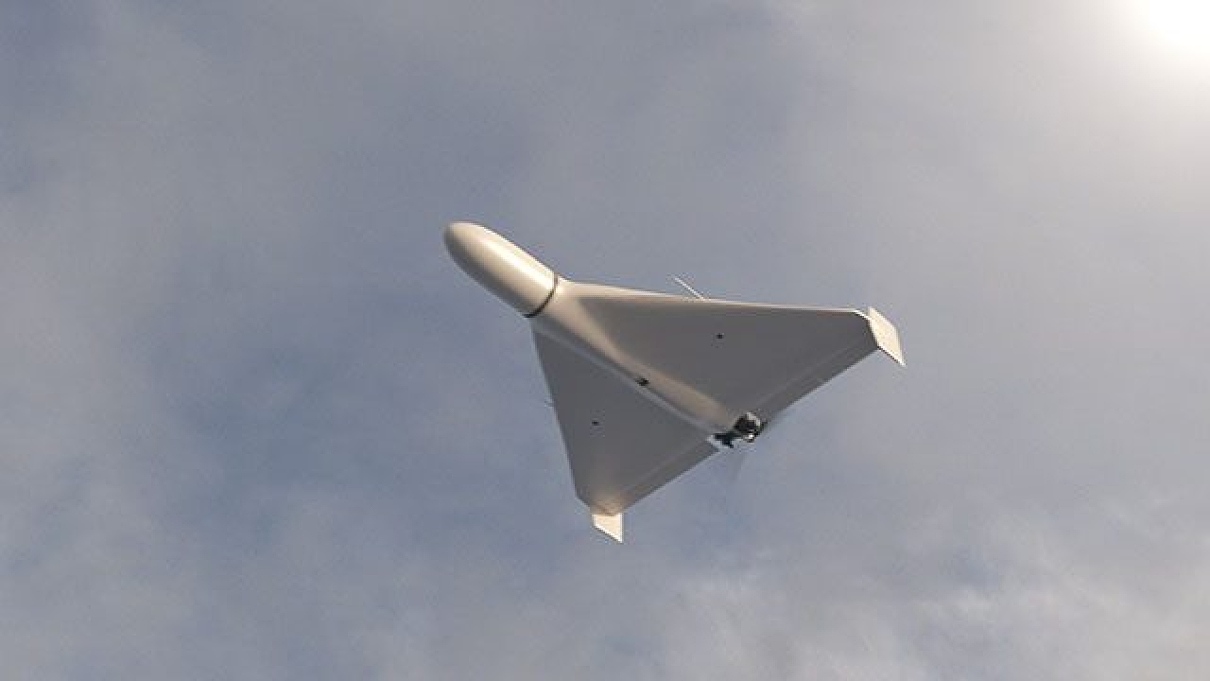Russia is struggling to replicate Iran’s Shahed series of loitering munitions (or kamikaze drones) at a factory in the country’s southeast Alabuga. It has, so far, been unsuccessful in being able to reverse-engineer the Unmanned Aerial Vehicle (UAV) entirely.
PLA Navy’s ‘Sharks’ Get Stealthier, China On Verge Of Producing ‘World-Class’ Nuclear Submarines – US Naval War College
Training in Iran and regular correspondence with the Persian country’s drone developer has not yet yielded complete results, according to documents accessed by The Washington Post.
Interestingly, another report by Conflict Armament Research (CAR) last week also compared the Geranium 2 to Shaheds (the Shahed-136 rechristened by the Russians as Geran-2) by observing critical differences to its internal circuitry, components, and tweaks to its airframe, body, and some of the design configuration.
Moreover, as both reports note, the Russian domestic effort in producing their local version of the Iranian-origin weapon also apparently settled the diplomatic debate over Iran arming Russia against Ukraine. Tehran later admitted that it sent the drones to Russia but clarified it did so a few months before the war. Analysts then concluded that Moscow developed its variant.
The Washington Post report on the leaked documents also contained floor plans and layout of the massive factory 500 miles east of Moscow in Tatarstan, set up in November last year.
The documents show factory engineers trying to improve upon Iran’s “dated manufacturing techniques” with Russian “industrial expertise” to expand production and “exploring improvements to the drone itself.” This includes making the drones capable of swarm attacks that can autonomously coordinate to strike targets.
Ambitious Plans To Locally Produce Drones
Satellite photos of a large patch of land in Alabuga’s Special Economic Zone (SEZ) in June 2021, August 2021, and April 2023 shows a massive factory coming up progressively. However, it is behind schedule and unlikely to meet its target of manufacturing 6,000 drones.
This means Russia had been preparing for the war for a long time, with planning going back to mid to late-2020 and some of the armament production plans – in this case, sourcing and locally producing the Shahed drones – predating the war by several months.

The project at Alabuga, codenamed “Project Boat,’ has manufactured only 300 units of the local Russian version. At the same time, the remaining have only been assembled but have the potential to outstrip “Iran’s drone development capability.”
Under the Russian-Iranian deal, as per the documents, Tehran agreed to sell Moscow “what is effectively a franchise.” Iranian specialists would share project documentation, locally produced or reverse-engineered components, and know-how, against more than half of the US$2 billion project cost.
The multistage, 14-football field large facility would have three progressive phases. The first would involve the Iranian delivery of disassembled drones that would be reassembled at the factory; the second phase requires the facility to produce the bare hollow airframes that would be installed with Iranian-supplied electronics and components; and the last and the most “ambitious” stage aspires to produce to 4,000 to 5,000 drones with “little Iranian assistance” by September 2025.
American Components In Russian Equipment
The documents identify sourcing components and electronics as the most challenging stage in the project since nearly 90 percent of the drones’ computer chips and electrical devices originate in the West and the US. Only 130 of the components are produced in Russia. Sanctions on Moscow have cut its electronic imports.
Interestingly, none of these are sensitive strategic military technologies and are regular civilian-use electrical and electronic devices with dual-use in defense systems. They, therefore, do not fall under the Commerce Department’s Export Control List. But they are, however, subject to the blanket ban on all electronic sales to Russia.
The Western components in the Geran drones include 21 Texas Instruments-made sub-components inside its flight control unit and 13 components by the Massachusetts-based Analogue Devices in the drones’ major circuit boards. This includes an ‘accelerometer’ critical for the UAV to fly autonomously along a pre-programmed path in case satellite navigation is lost.

Russian engineers also struggle to reproduce the Iranian reverse-engineered version of the German Limach Flugmotoren L550E engine, which they describe as “the most complex task.” Alabuga technicians are requesting two copies of the engine. One will be taken apart for reverse-engineering and subjected to “chemical tests,” possibly to understand the alloy and metallurgy of the material.
However, this will not be “functional” after such experimentation. The other Iranian engine will be used for “comparative tests” to check how close the Russian version performs to the Iranian one.
“But despite those challenges, Alabuga engineers have worked to improve the drones. They have swapped out malfunctioning Chinese electronic components for more-reliable analogs, and they replaced a glue the Russians deemed defective and added waterproofing in a design overhaul of the airframe,” the Post said.
Difference Between Shahed-136 & Geran-2 Copy
The CAR report meanwhile studied the damaged remains of two Geran-2 UAVs that crashed in Ukraine and, based on the components and microelectronics inside – many of which originate from the US, Switzerland, and China – concluded that they were manufactured in the Russian Federation rather than Iran. This was based on “major differences in the airframe construction and the internal units, including for navigation.”
In general, through a “detailed analysis of their design characteristics and key components – compared with UAVs previously documented in Ukraine – CAR assesses that the Russian Federation has started producing and fielding its domestic version of the Shahed-136.”
Whether Iran will use the reports to prove its innocence in the war, where it maintained that it never armed any side, remains to be seen.
While Russian officials continue to flatly deny any weapons deal with Iran and Tehran, not commenting on the issue means neither party wants to reignite the debate and put President Ebrahim Raisi’s government in a tough spot.
It remains under devastating sanctions over its nuclear program; the Biden administration continues Trump’s “maximum pressure” campaign; is facing a US naval formation building up in the Persian Gulf; and continues its shadow war with Israel.
- The author can be reached at satamp@gmail.com
- Follow EurAsian Times on Google News




